Abstract
Previous work has been done on both optimizing the clinical trials process, and on sending critical laboratory results and decision support through paging systems. We report the first integration of both these solution, focusing on improving the clinical trial recruitment process. We describe a clinical trial needing a real-time method of recruiting patients in an unbiased manner, quickly enough that study tests can be obtained before patients leave or samples discarded. The report describes how the ten currently recruited patients were found and how diagnoses of potentially life-threatening disorders are being made.
Full text
PDF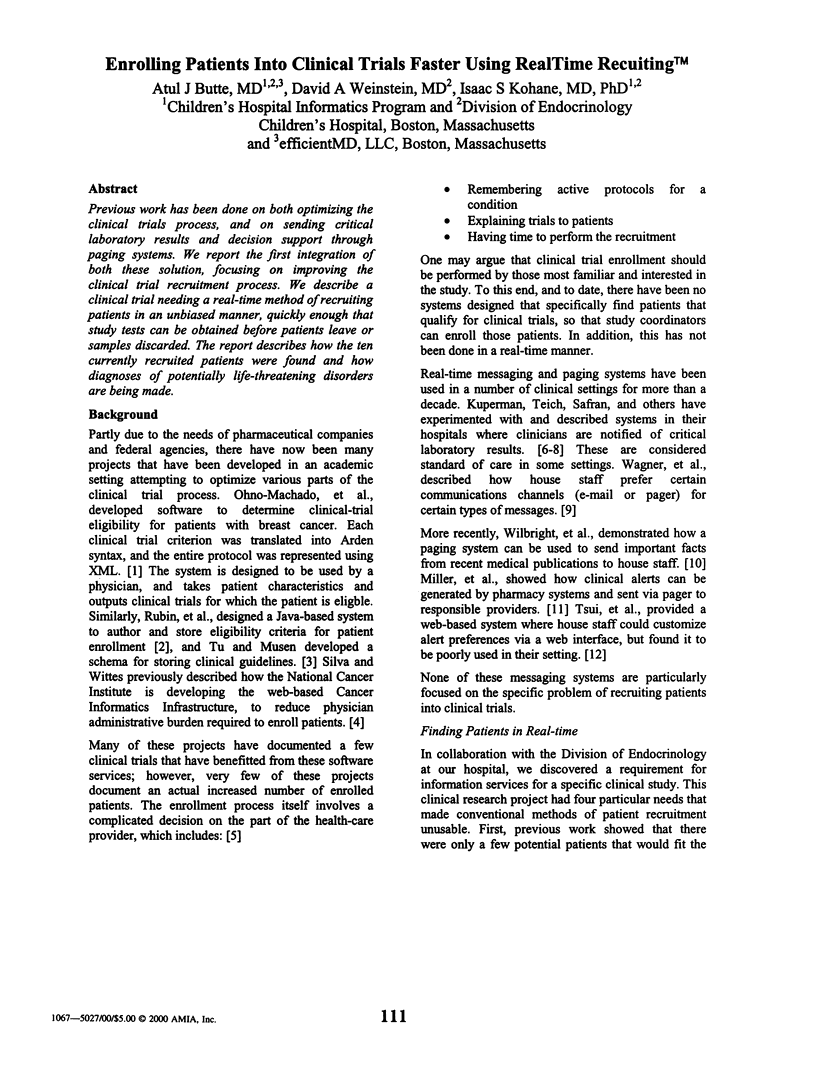
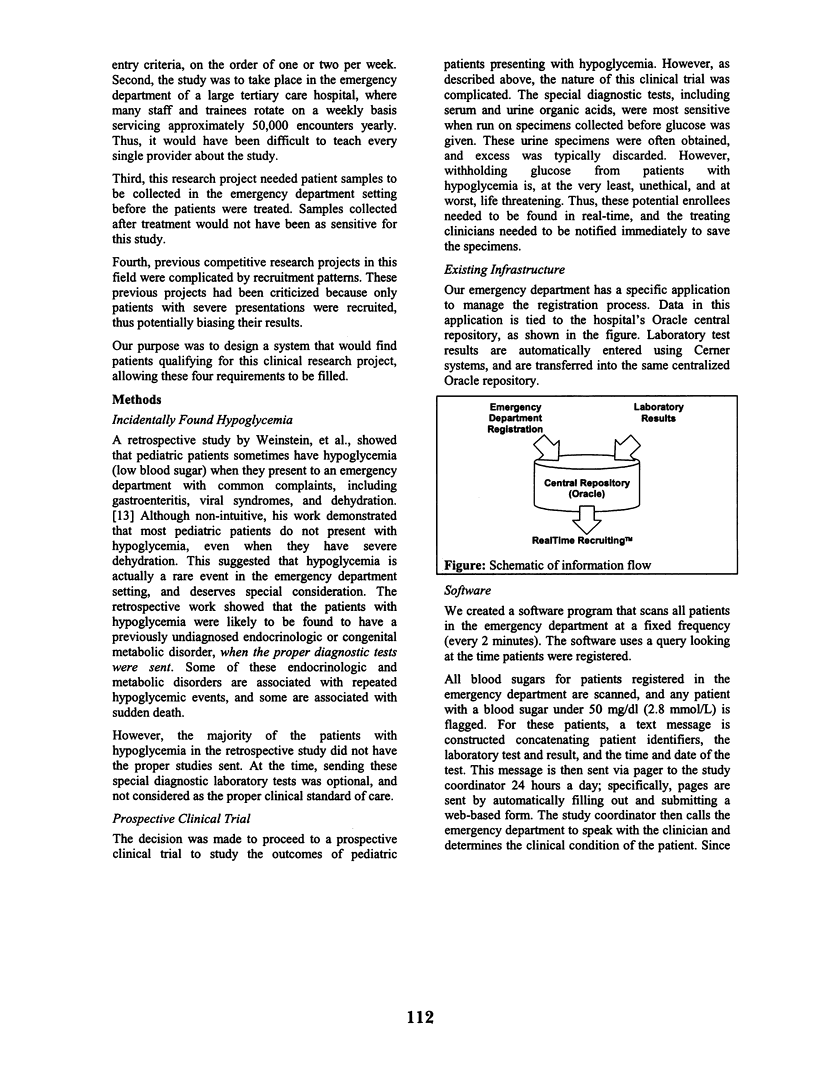
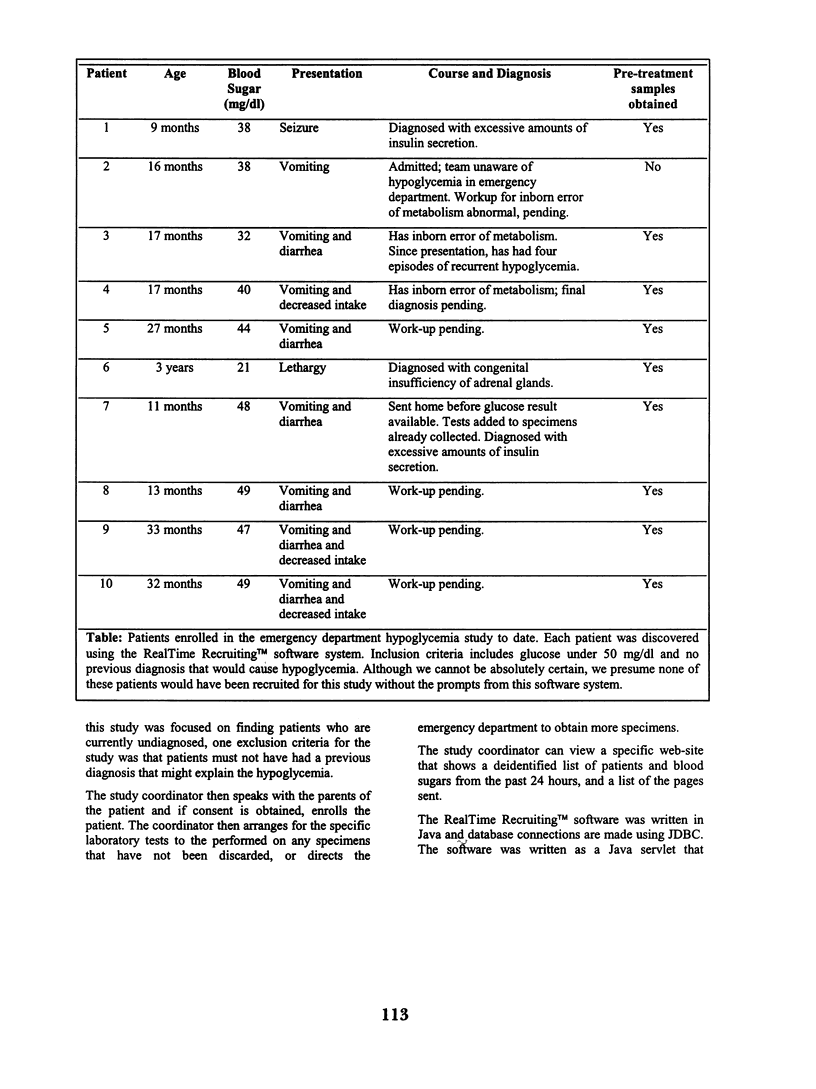
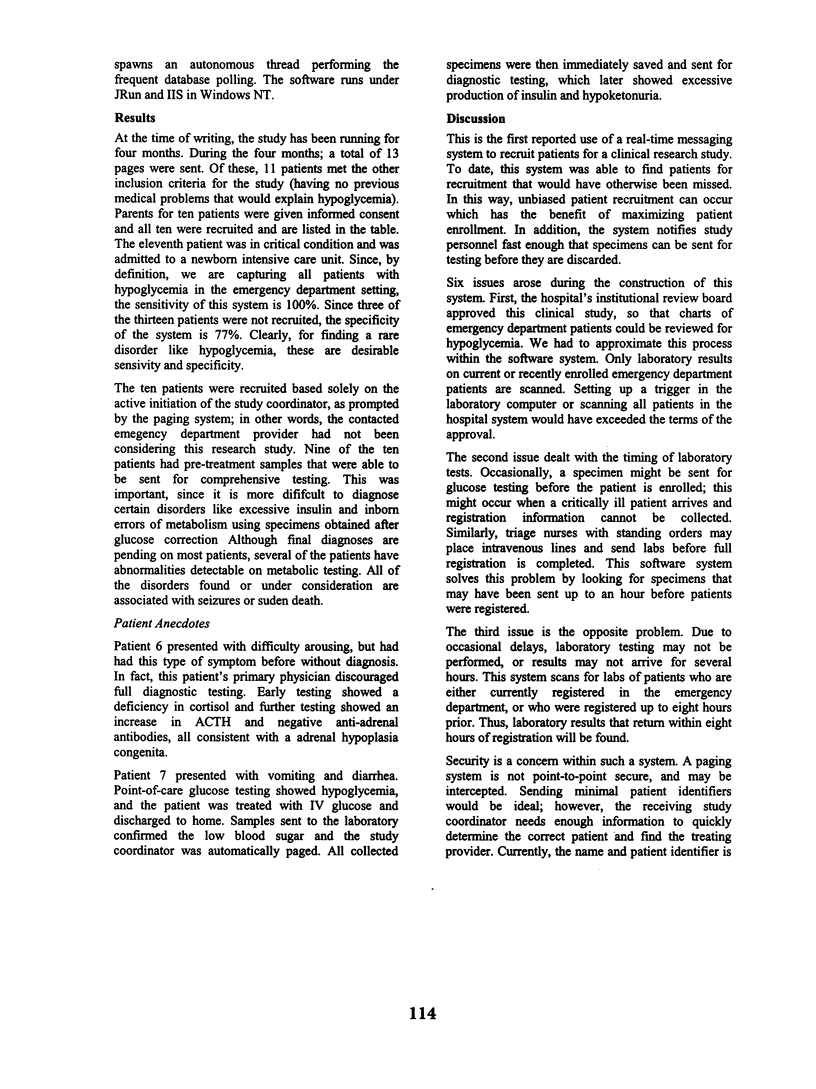
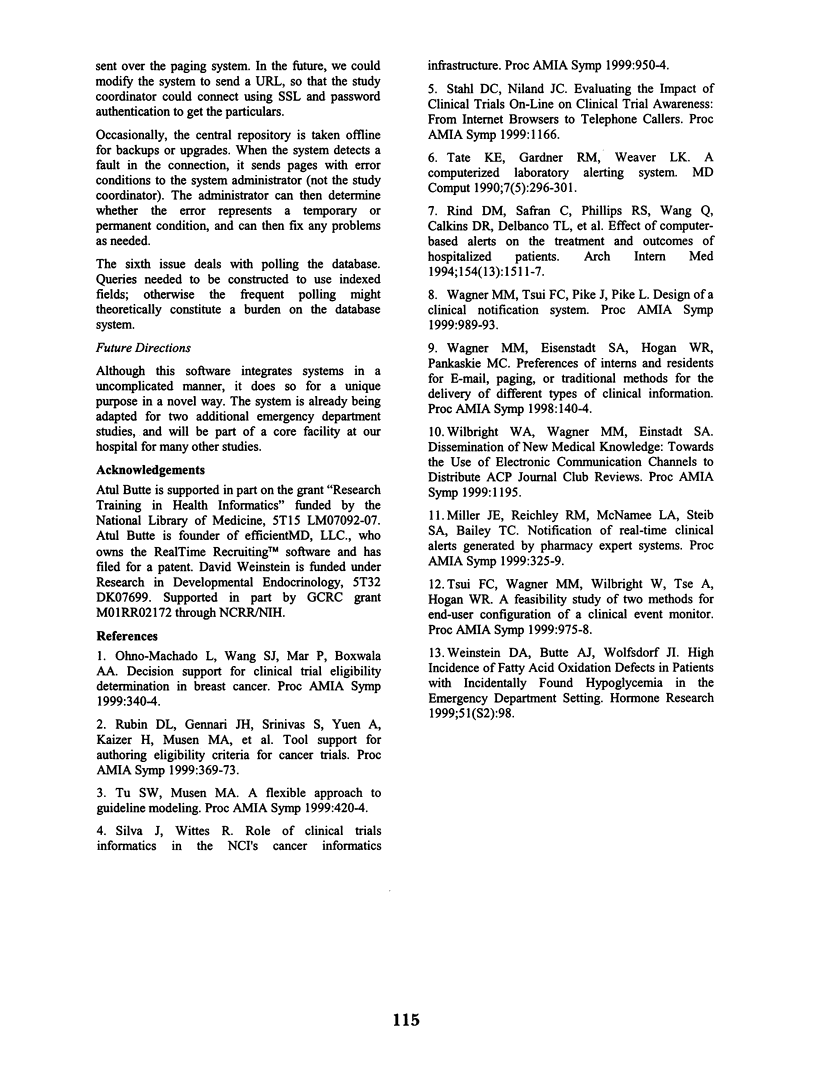
Selected References
These references are in PubMed. This may not be the complete list of references from this article.
- Miller J. E., Reichley R. M., McNamee L. A., Steib S. A., Bailey T. C. Notification of real-time clinical alerts generated by pharmacy expert systems. Proc AMIA Symp. 1999:325–329. [PMC free article] [PubMed] [Google Scholar]
- Ohno-Machado L., Wang S. J., Mar P., Boxwala A. A. Decision support for clinical trial eligibility determination in breast cancer. Proc AMIA Symp. 1999:340–344. [PMC free article] [PubMed] [Google Scholar]
- Rind D. M., Safran C., Phillips R. S., Wang Q., Calkins D. R., Delbanco T. L., Bleich H. L., Slack W. V. Effect of computer-based alerts on the treatment and outcomes of hospitalized patients. Arch Intern Med. 1994 Jul 11;154(13):1511–1517. [PubMed] [Google Scholar]
- Rubin D. L., Gennari J. H., Srinivas S., Yuen A., Kaizer H., Musen M. A., Silva J. S. Tool support for authoring eligibility criteria for cancer trials. Proc AMIA Symp. 1999:369–373. [PMC free article] [PubMed] [Google Scholar]
- Silva J., Wittes R. Role of clinical trials informatics in the NCI's cancer informatics infrastructure. Proc AMIA Symp. 1999:950–954. [PMC free article] [PubMed] [Google Scholar]
- Tate K. E., Gardner R. M., Weaver L. K. A computerized laboratory alerting system. MD Comput. 1990 Sep-Oct;7(5):296–301. [PubMed] [Google Scholar]
- Tsui F. C., Wagner M. M., Wilbright W., Tse A., Hogan W. R. A feasibility study of two methods for end-user configuration of a clinical event monitor. Proc AMIA Symp. 1999:975–978. [PMC free article] [PubMed] [Google Scholar]
- Tu S. W., Musen M. A. A flexible approach to guideline modeling. Proc AMIA Symp. 1999:420–424. [PMC free article] [PubMed] [Google Scholar]
- Wagner M. M., Eisenstadt S. A., Hogan W. R., Pankaskie M. C. Preferences of interns and residents for E-mail, paging, or traditional methods for the delivery of different types of clinical information. Proc AMIA Symp. 1998:140–144. [PMC free article] [PubMed] [Google Scholar]
- Wagner M. M., Tsui F. C., Pike J., Pike L. Design of a clinical notification system. Proc AMIA Symp. 1999:989–993. [PMC free article] [PubMed] [Google Scholar]


